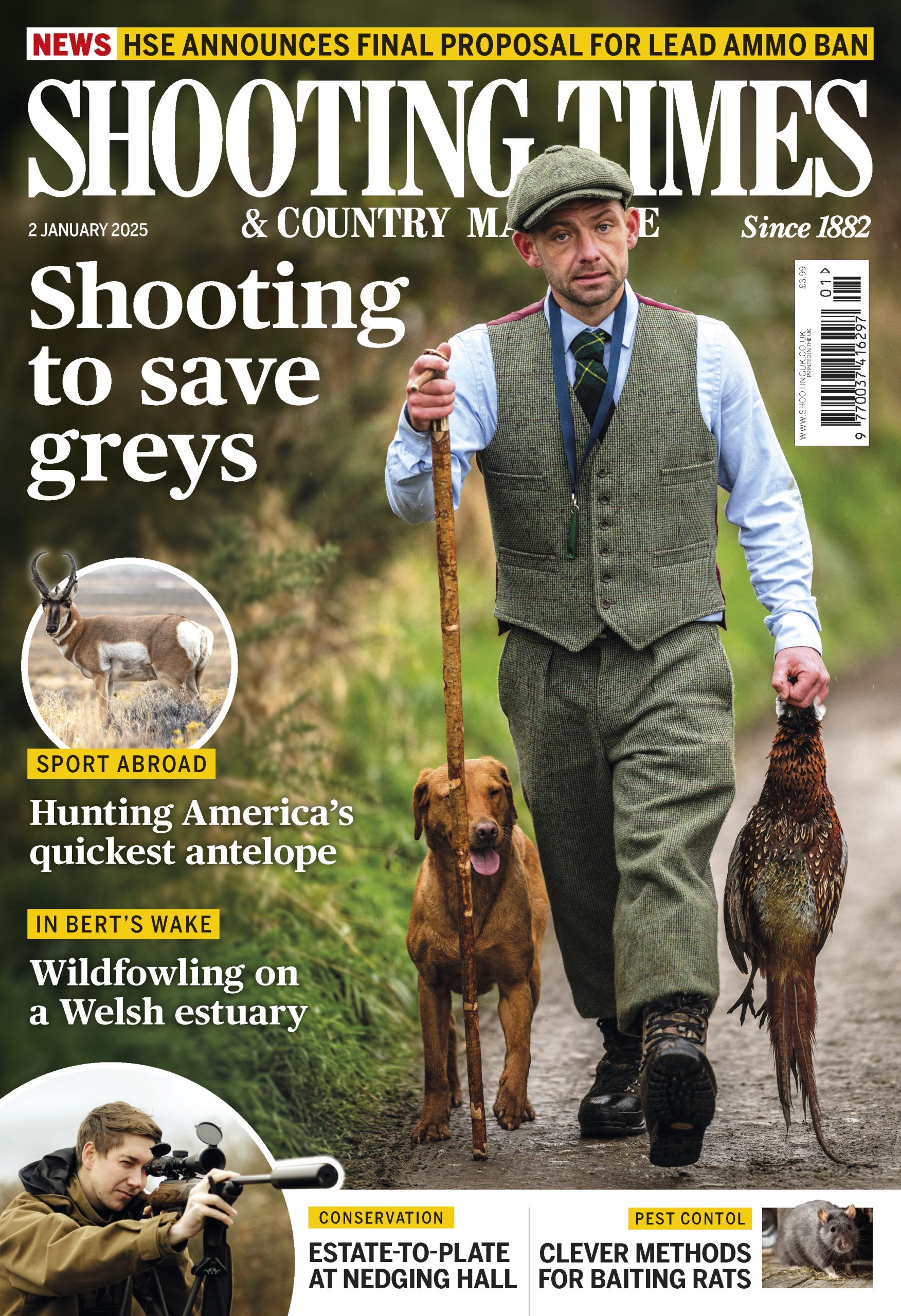How to shoot clay pigeons: Key clay pigeon shooting tips
Understand the jargon heard on the clay shooting ground with Mark Russell’s tips for shooting beginners
Win CENS ProFlex DX5 earplugs worth £1,149 – enter here
So you've decided to venture onto a clay ground with a view to taking up the sport. Congratulations. It's a popular pastime for good reason, as you'll discover.
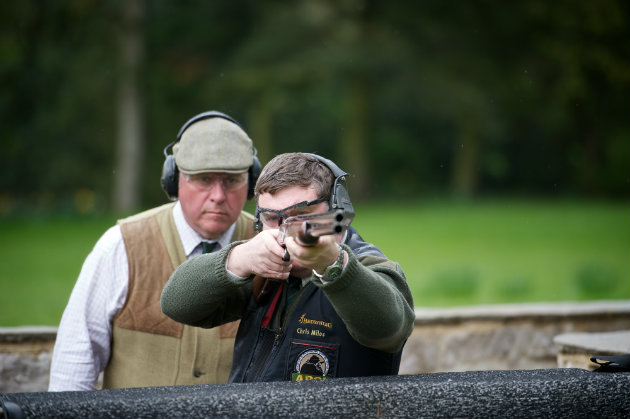
So you’ve decided to venture onto a clay ground with a view to taking up the sport. Here are some tips so you start off on the right foot.
To find a good clayshooting ground near you with good instruction check the Clay Pigeon Shooting Association club finder here. Clayshooting is an extremely accessible sport and many grounds have good facilities for shooters in wheelchairs.
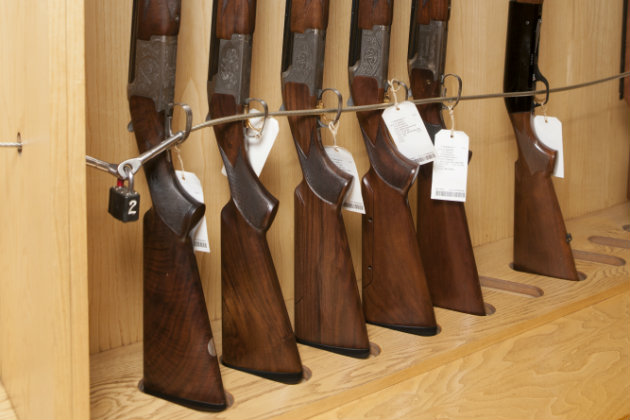
These shotguns all have a pistol grip which is recommended for beginners. A good instructor will advise you on buying a gun.
Understand the jargon heard on the clay shooting ground with Mark Russell’s tips for shooting beginners
Getting going – will you get a thump in the shoulder? The thought of firing a shotgun for the first…
Although heavier over-and-unders aid recoil suppression and allow for a greater field of view. I would look initially at the pupil’s eye dominance and establish their ‘handedness’ – right or left handed – which is all part of good gun fit.
Wherever possible I would try and get people to shoot from the shoulder beneath the dominant eye. I am against the closing of an eye or any vision correction ‘aid’ as I believe we live our day-to-day life with both eyes open. A correct fitting gun will overcome any visual problems.

From left to right: 12,20, 28 bore and .410. Novices should stick to 20s and 12s and avoid the smaller bores initially.
Buy the less expensive range you can when starting out clayshooting and with the lowest recoil. As a novice you will not be shooting long targets where more expensive cartridges come into their own. You don’t need to spend a fortune on guns and cartridges at the novice stage.
Beginner’s guide to shooting: Here we have the answers to some of the questions you have asked about starting shooting.
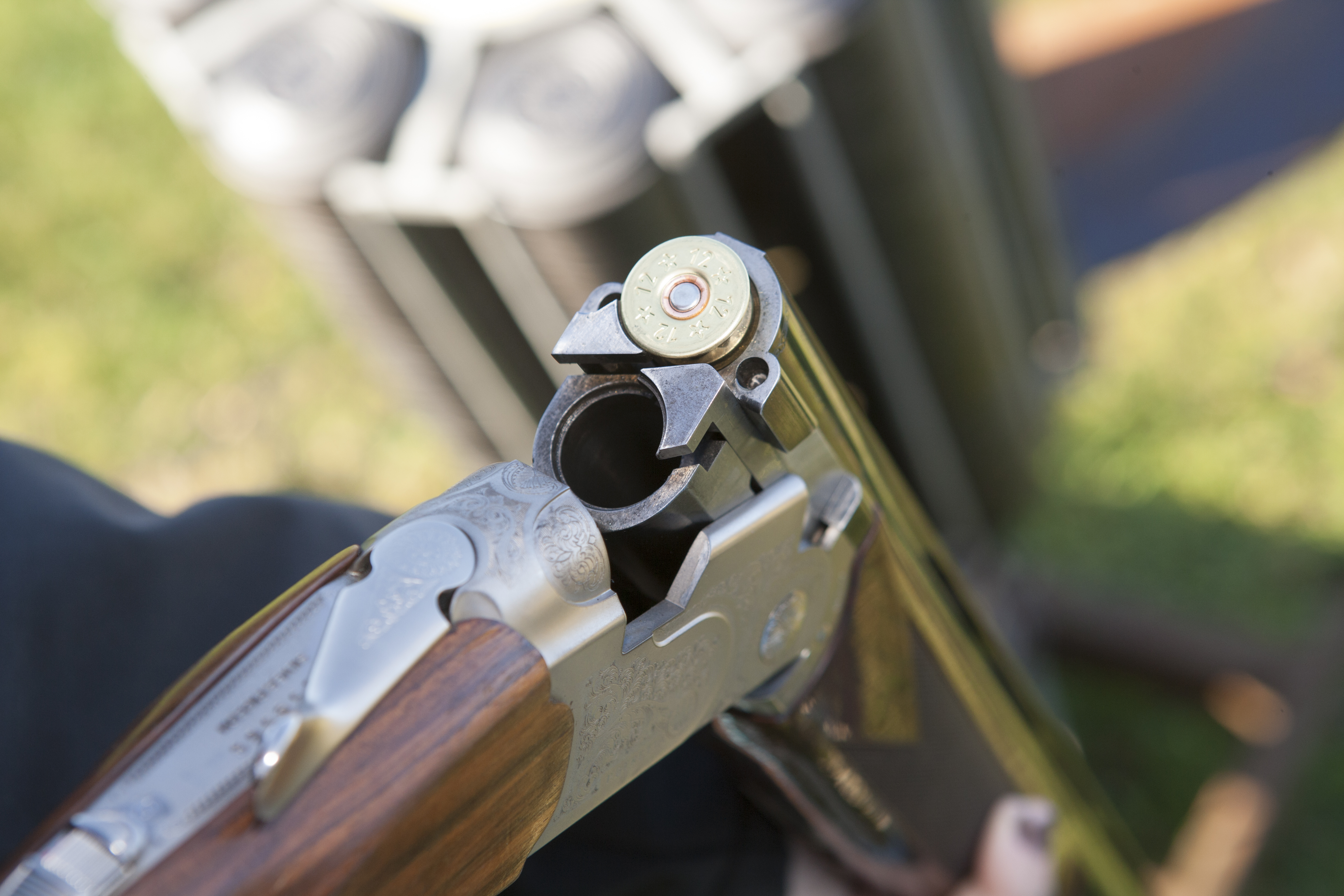
One cartridge at a time only for beginners.
At this stage I load the gun with only one round. As confidence builds I let the pupil handle it themselves and would look at the safety aspects of shotgun shooting as the lessons progress. The rhyme I teach them is ‘On the wood is good’, i.e. keep your forefinger extended on the woodwork above the trigger until it is time to shoot.
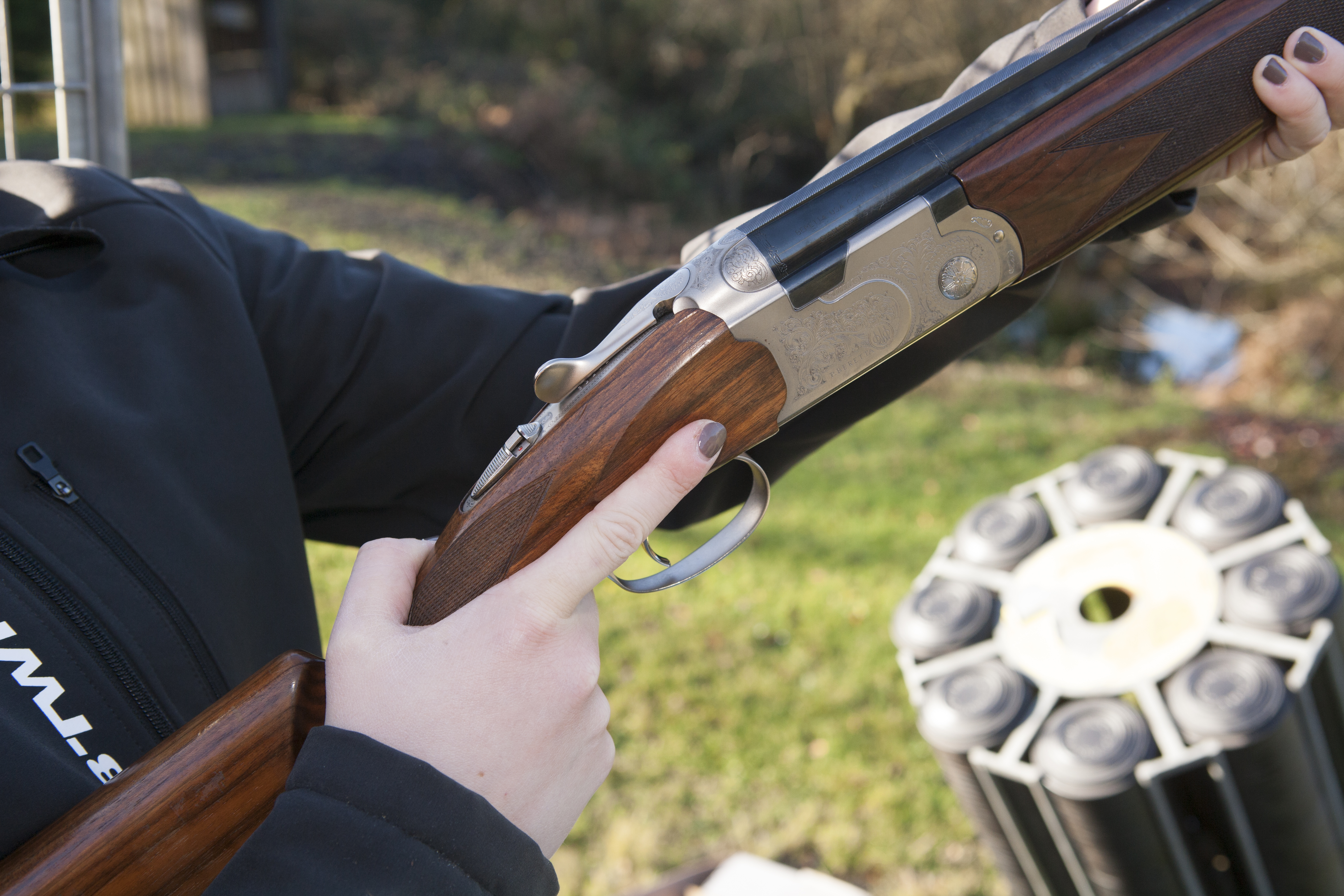
The correct and safe placement of the trigger finger before shooting
One of the clays I would normally show a first-timer is a ‘floppy crow’. It is a slow, near vertical incomer which teaches muzzle-to-target awareness because there is plenty of time to become visually aware.
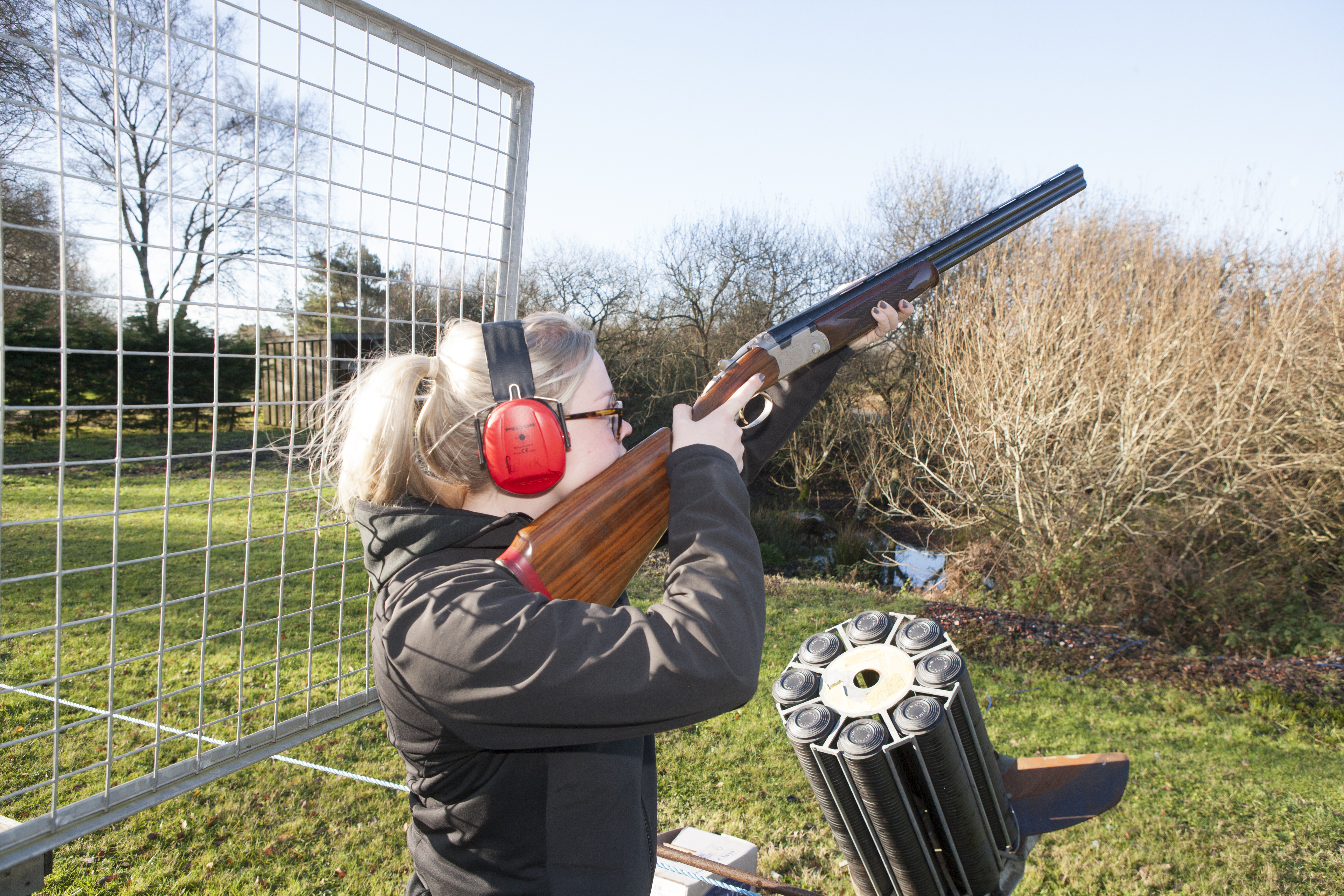
Getting ready to shoot the crow clay with finger in the safe position and the muzzles about halfway up the clay’s trajectory
This target is a slow, near vertical, incomer which teaches the beginner muzzle to target awareness as there’s plenty of time to become visually aware.
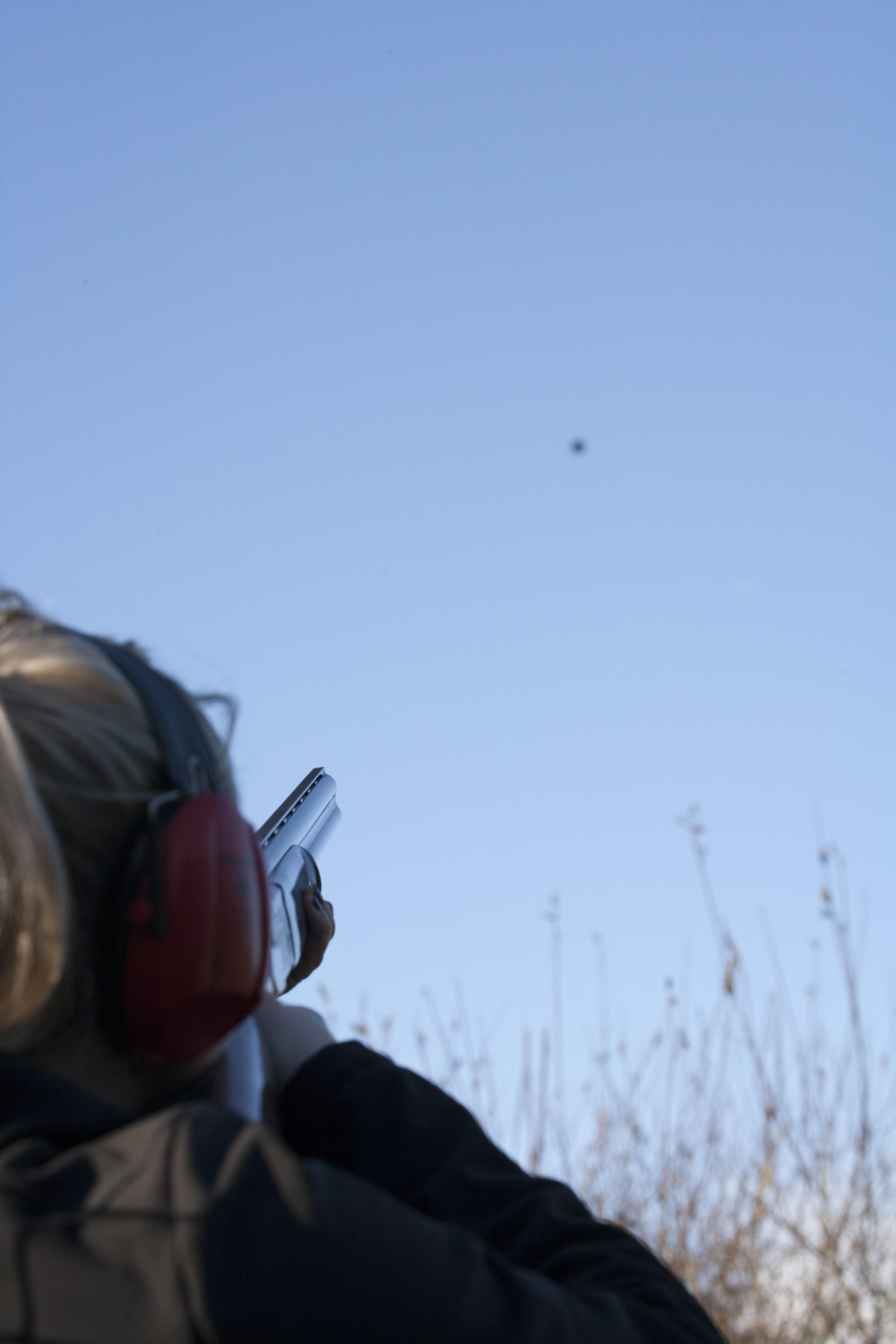
1. As the clay is halfway up its trajectory, start moving the gun on it.
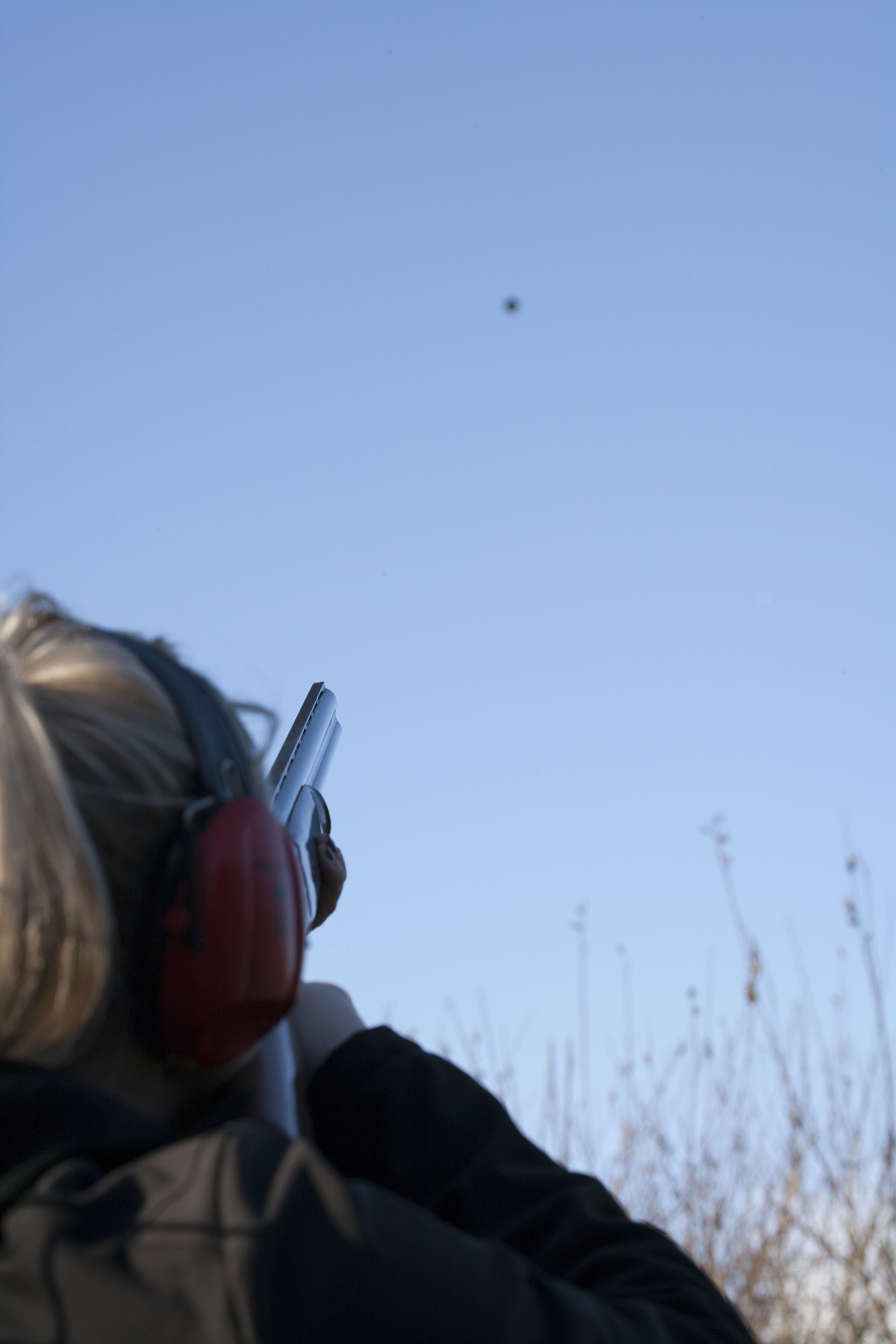
2. Keep following the clay as it is nearing the apex of its trajectory
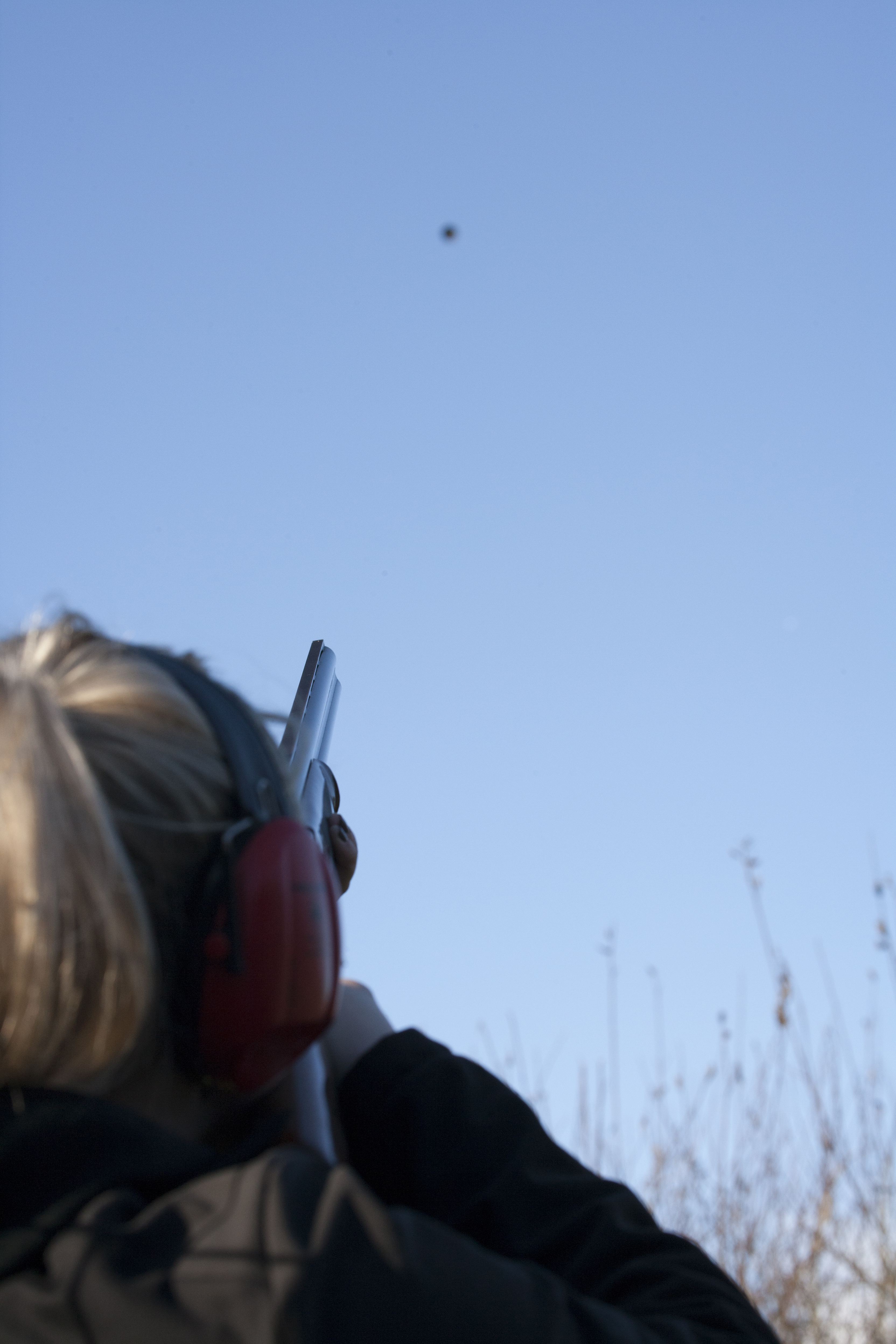
3. The clay is almost stationary at the peak of its trajectory – this is when you should fire
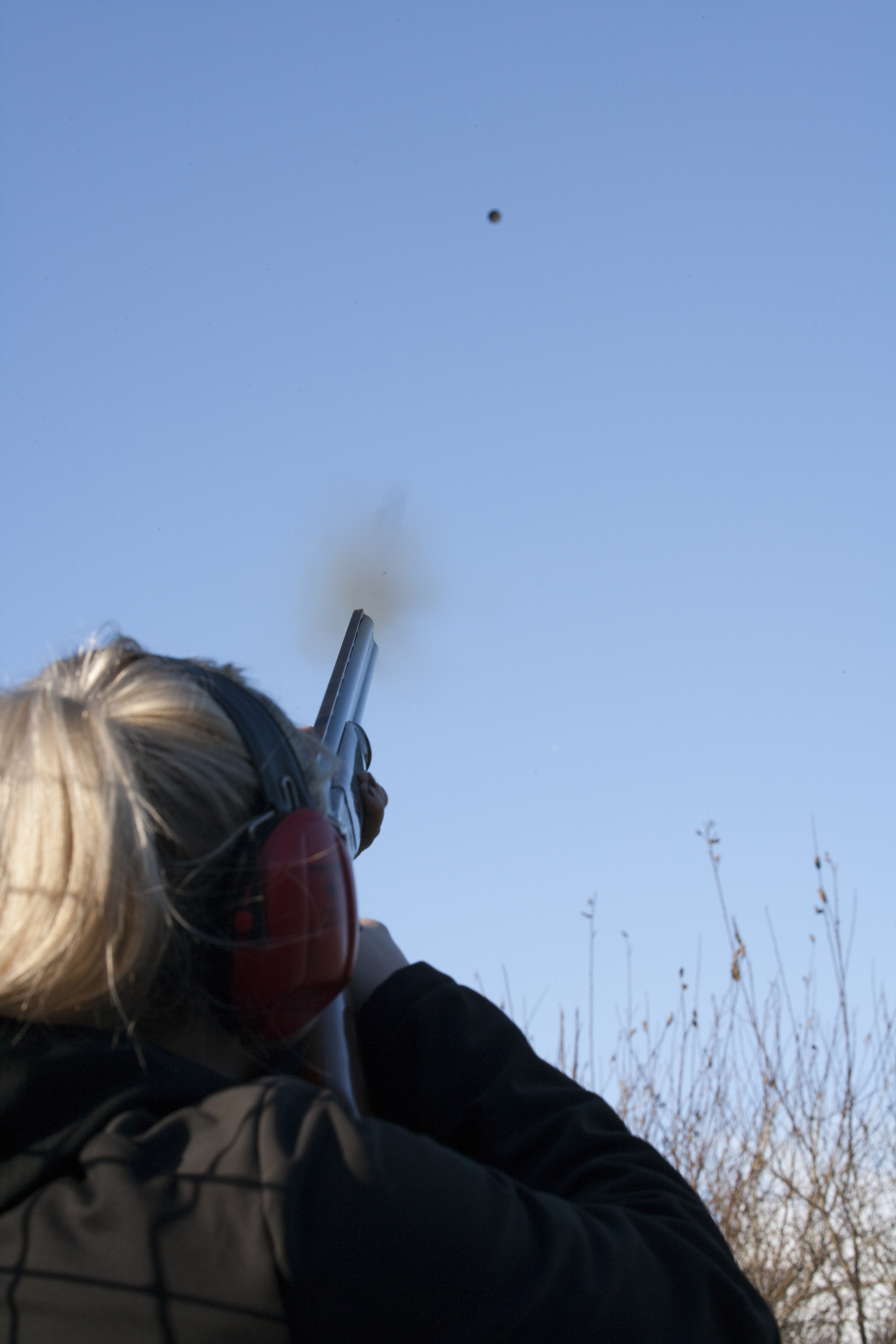
4. From the shooter’s view, the clay should be just about the muzzle
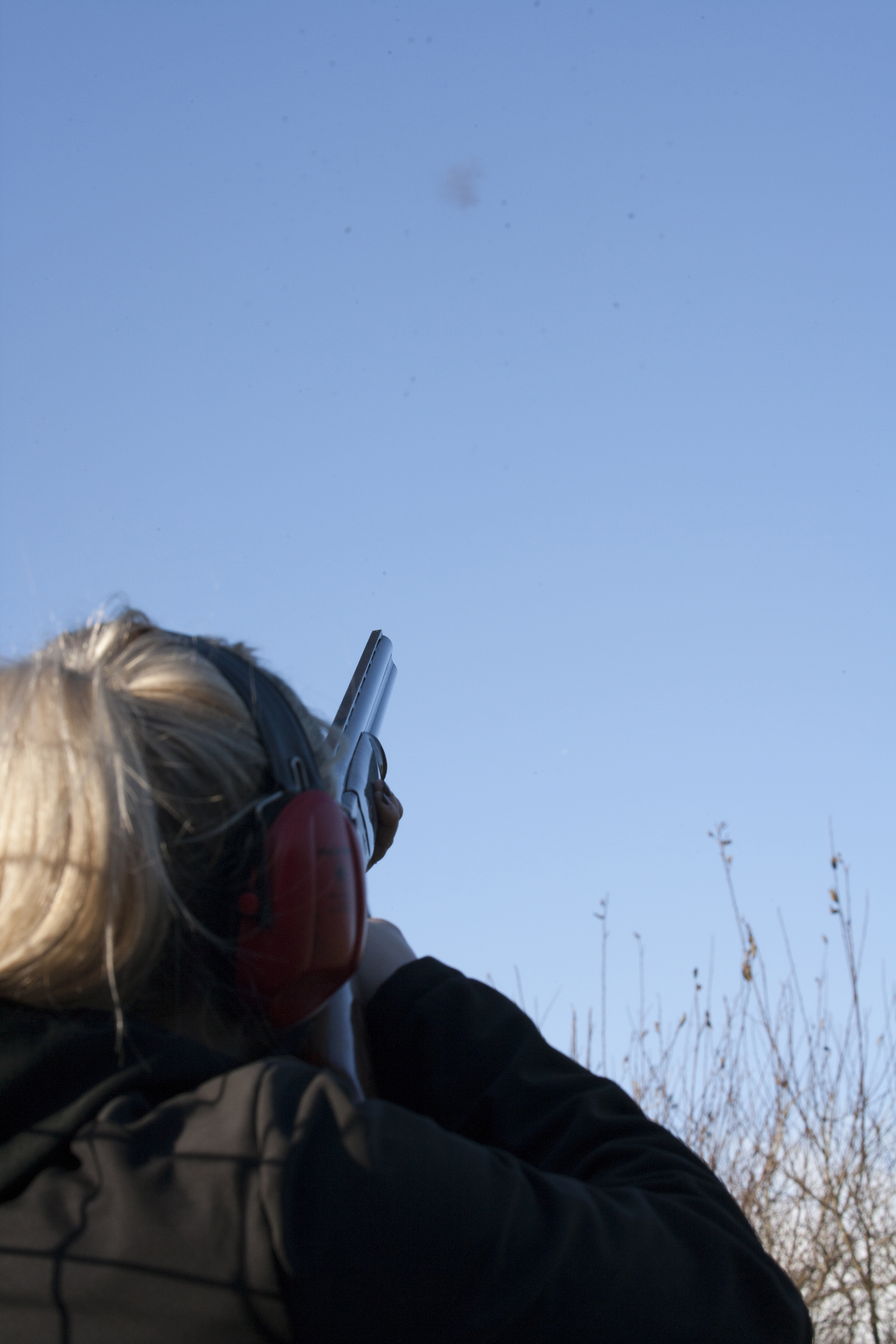
6. The clay is powdered. One you hit a succession of five or six you can move to gun down
People often think that practice is going out and shooting 50 or 100 targets around a layout. In fact this does very little. Practice should be disciplined, concentrate on a minimal number of targets and experiment with different shooting techniques. This way you can really start to understand what works for you as an individual. A good instructor will tell you what you should be focusing on.
Get the latest news delivered direct to your door
Discover the ultimate companion for field sports enthusiasts with Shooting Times & Country Magazine, the UK’s leading weekly publication that has been at the forefront of shooting culture since 1882. Subscribers gain access to expert tips, comprehensive gear reviews, seasonal advice and a vibrant community of like-minded shooters.
Save on shop price when you subscribe with weekly issues featuring in-depth articles on gundog training, exclusive member offers and access to the digital back issue library. A Shooting Times & Country subscription is more than a magazine, don’t just read about the countryside; immerse yourself in its most authoritative and engaging publication.
